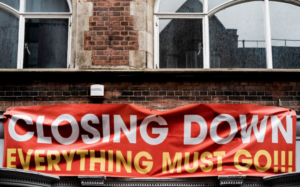By Jeff Domansky, Jan 18, 2021
The National Retail Federation (NRF) said holiday retail sales in the US were 8.3% higher during the Nov-Dec 2020 shopping season than last year, despite the lingering impact of the coronavirus pandemic.

Sales reached $789.4 billion, surprising the NRF and industry analysts and exceeding the NRF’s lower holiday sales forecast of growth between 3.6% and 5.2% issued in early November.
“Despite unprecedented challenges, consumers and retailers demonstrated incredible resilience this holiday season,” NRF President and CEO Matthew Shay said. “Faced with the rising transmission of the virus, state restrictions on retailers, and heightened political and economic uncertainty, consumers chose to spend on gifts that lifted the spirits of their families and friends and provided a sense of normalcy given the challenging year.”
“We believe President-elect Biden’s stimulus proposal, with direct payments to families and individuals, further aid for small businesses and tools to keep businesses open, will keep the economy growing,” Shay added.
Strong December sales
In December, NRF Chief Economist Jack Kleinhenz said 2020 was the Federation’s most difficult forecast because of so many unique challenges to the economy, including the pandemic.

Kleinhenz said consumers shifted into high gear in December, adding a strong finish to holiday sales that could be a positive sign for the US economy’s continuing recovery in 2021.
The 8.3% holiday season increase was more than double the 3.5% average holiday increase over the previous five years, including 2019’s +4% sales gain.
Online shopping grew substantially
Online retail sales were up 23.9% at $209 billion as consumers turned away from bricks and mortar to a wide range of online shopping options.
Kleinhenz said holiday-related spending picked up in the third and fourth weeks of December after it was too late to expect delivery of online purchases by Christmas. Consumers turned to quick in-and-out trips to stores. They took advantage of buy online, pick up in-store (BOPIS), curbside pickup, and other services retailers developed during the pandemic to respond to shifting consumer buying habits.
The holiday season saw gains in six out of nine retail categories, led by double-digit increases for online sales, building materials stores, and sporting goods stores. Results for key retail sectors during the November-December holiday period, compared to last year, included:

- Online and other non-store sales, up 23.9%
- Building materials and garden supply stores +19%
- Sporting goods stores +15.2%
- Grocery and beverage stores +9.6%
- Health and personal care stores +5.4%
- Furniture and home furnishings stores + 2.2%
- General merchandise stores, down 0.1%
- Electronics and appliance stores -14.4%
- Clothing and clothing accessory stores -14.9%.
Consumers appeared to have purchased electronics earlier in the year to help work from home more easily and found fewer reasons to buy clothing due to pandemic restrictions.
Research shows small businesses still need help
As the new Biden administration gets ready to take office and implement a much-anticipated $1.9 trillion stimulus plan, businesses send an alarm about their ability to survive before vaccinations and stimulus arrive.
Last Friday, Alignable released its January Road to Recovery Small Business Report highlighting key concerns from US small businesses:
- 80% of SMBs seek financial relief
- timely vaccine distribution is seen as even more important than PPP
- recovery not expected until after May 2021 by most
- intense cash crunch for 34% of SMBs.

66% of small businesses said they were still experiencing negative impacts from the pandemic, and 46% said they were suffering “significant impact.” Only 15% of SMBs reported a positive impact, flat compared to results earlier last year.
Small business cash on hand disappearing
Most concerning is that 34% of 7,133 businesses surveyed have only one month or less cash on hand for their business survival. Many businesses are opting to go into “hibernation,” trying to wait out their survival until the positive impact of government stimulus efforts and the chance to reopen when vaccinations take hold.
84% of US and Canadian businesses surveyed said vaccine distribution was “important,” and 36% it was “critical” to their business survival after May. In fact, 56% said vaccine distribution was more important than the 44% who said PPP payments were important for their local businesses to survive.
“Seems like many small business owners are expressing a bit of a wait-and-see attitude with the upcoming inauguration, PPP relief scheduled to launch, and much of Washington in a state of disarray,” said Alignable CEO Eric Groves in the report.
Holiday sales growth was a positive surprise for retailers with e-commerce capacity. Retailers and small businesses still have a rocky road to recovery ahead, but there is optimism on the horizon if vaccine distribution and economic stimulus can be quickly implemented.
For further PaymentsNEXT coverage on e-commerce, check out:
Pandemic pushes dynamic e-commerce growth ahead in SE Asia
It’s beginning to feel a lot like e-commerce, fraudsters & returns








LET’S CONNECT